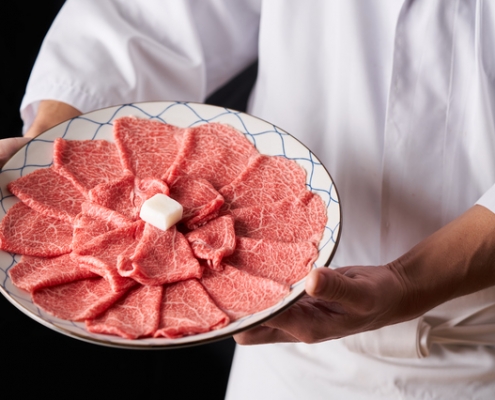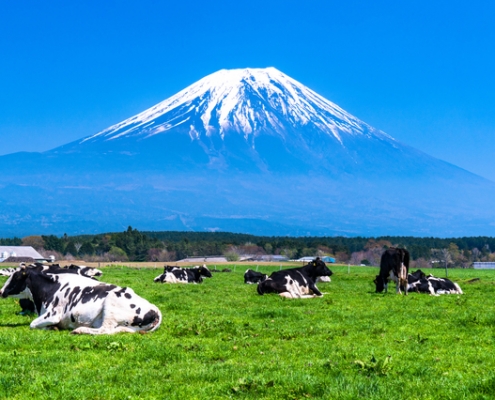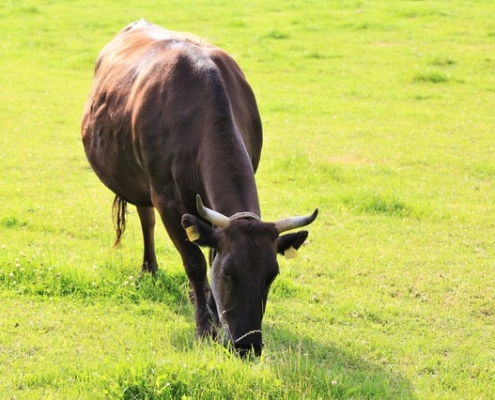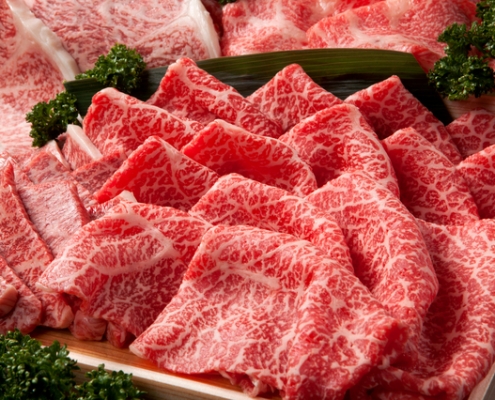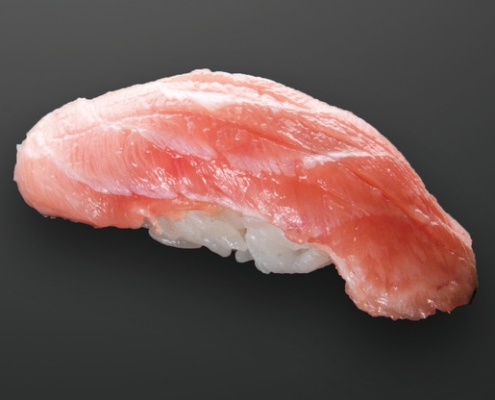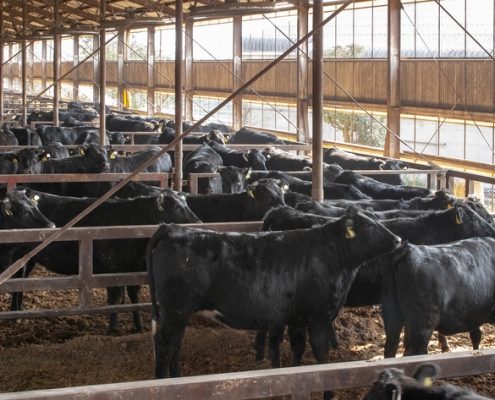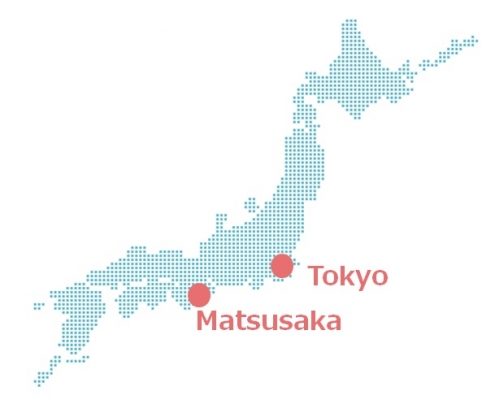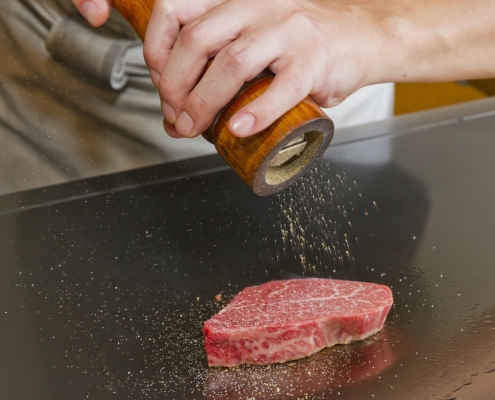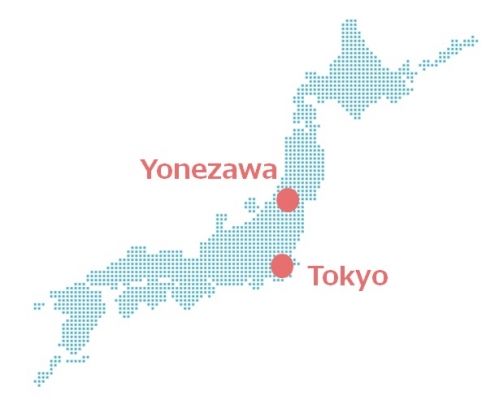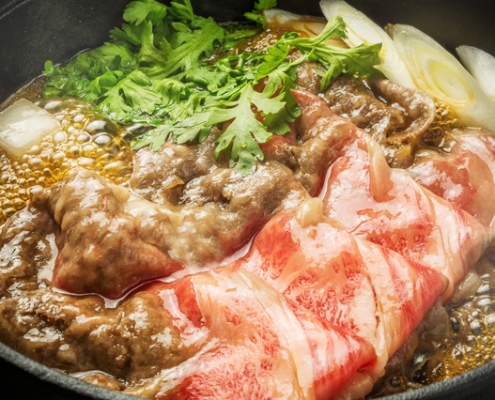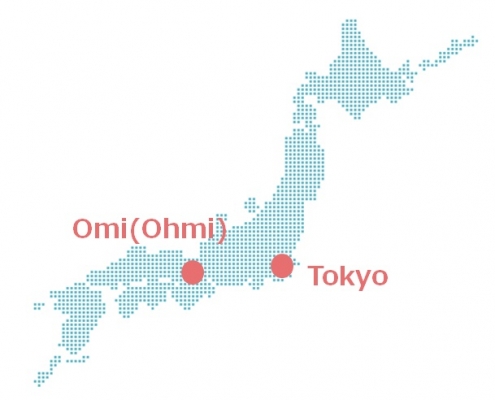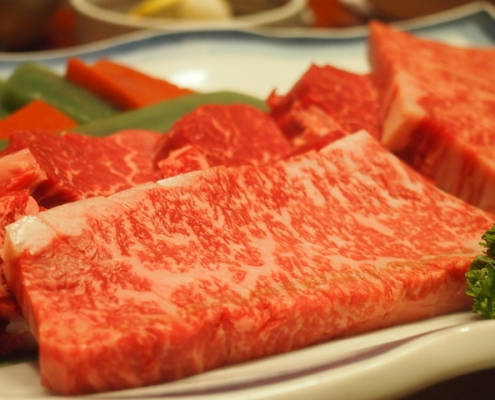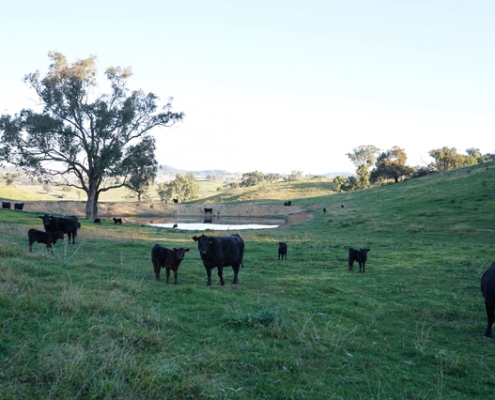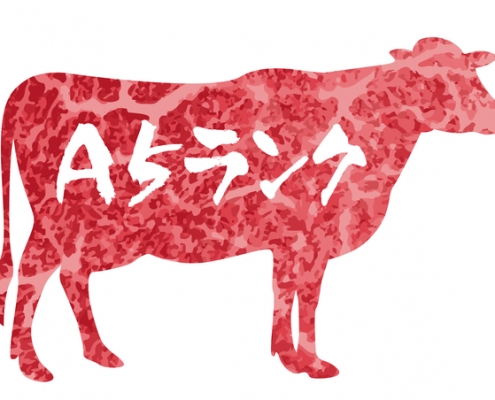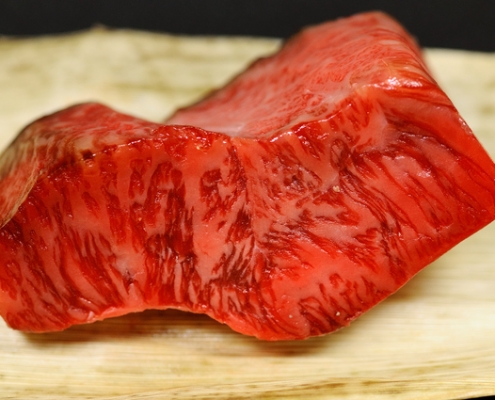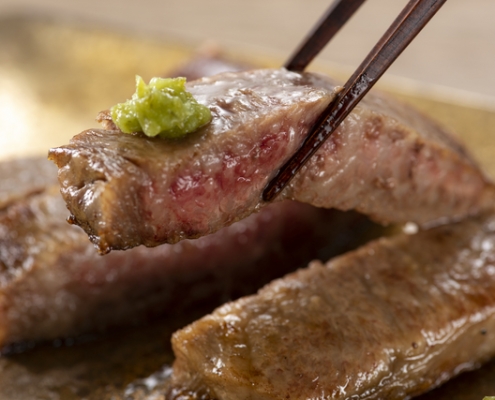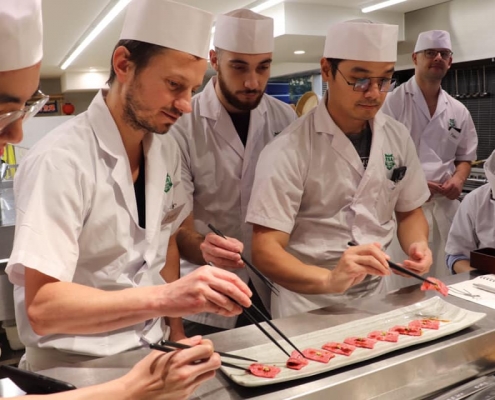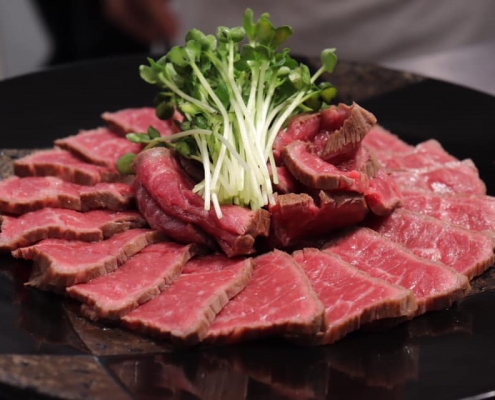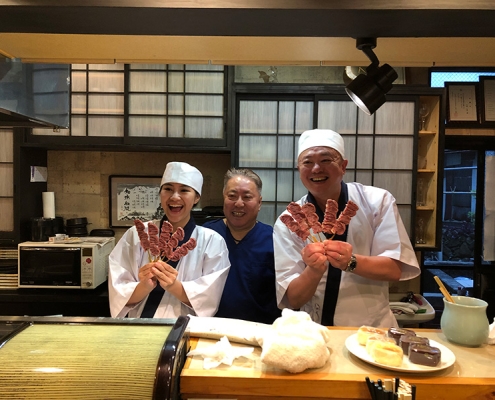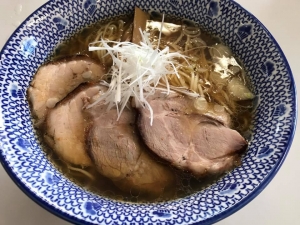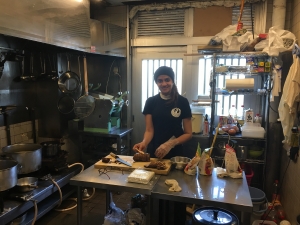Beginner’s Guide to Wagyu Japanese Beef
May 20 2023 Updated
Let’s begin with what wagyu is. Same as other countries, Japan raises both beef cattle and dairy cattle like Holsteins, and not all cows are called “wagyu.”
Holsteins cows in Japan
The term is used for only four breeds that are grown exclusively for meat production, including “Kuroge Washu (Japanese Black)” or crossbreeds between the four.
More than 90% of wagyu is Kuroge Washu, including Matsusaka and Kobe beef.
Kuroge Washu Wagyu (Japanese Black)
These breeds are characterized with very intricate streaks of fat integrated within meat, called “sashi.” Since their fat has a lower melting point than other breeds, it melts in your mouth and creates its iconic taste.
When streaks of fat are fine and dispersed like frost, the cut is called “shimofuri (“shimo” means frost)” and has been loved by Japanese people since the 1970s.
Similar to o-toro, the fattiest portion of tuna, Japanese people have come to prefer fatty meat in modern days.
To cater to this tendency, wagyu developed as the result of cross-breeding between the breeds that have more fat streaks.
Japan is also mountainous and has less land than Western countries. Since it is difficult to procure plain land to graze cattle, farmers have to raise them in a cowshed. This unique situation led to raising the breeds with more fat.
On top of that, the Japanese government loosened regulations on beef imports in the 1990s and brought a large amount of affordable and good-quality red meat from Europe and the Americas.
For their survival, cattle farmers in Japan produced high-end meats that feature more marbling to differentiate their merchandise from imported beef.
This is how wagyu developed in Japan.
What Are Regional Brands?
Wagyu is a term for particular breeds of high-quality meat, such as Kuroge Washu. Once the beef passes more detailed standards, it becomes “brand beef.” Below are some representative brands in Japan.
Matsusaka beef
This world-renowned beef is known for its sweet and elegant flavor and smooth, melting texture. To guarantee the safety and quality of the meat, “Matsusaka Cattle Individual Identification Management System” manages all the data of the cows from birth to sale.
“Tokusen (specially selected) Matsusaka Beef” is a title given to the cut that passed more stringent standards among the breed and accounts for only a small percentage. Its exceptional taste is worth trying in life.
Kobe beef
It is a well-known story that the former U.S. President Barack Obama asked for Kobe beef when he came to Japan in 2009.
Kobe Bryant, one of the best professional basketball players who passed away in 2020, got his first name because his father was so impressed with Kobe beef when he came to Japan.
Globally Kobe beef is more famous than Matsusaka beef and its characteristic is fine-grained tissues of meat. It also boasts refined sweetness. Kobe beef is usually served as steak or at teppanyaki (Japanese-style grilling).
Yonezawa beef
Along with Kobe and Matsusaka beef, this brand from Yamagata Prefecture is widely known in Japan. The cattle are fed rice straw, which is harvested from the ranchers’ own rice fields, and the high quality fodder grown in rich nature produces sweetness in the fat.
I recommend sukiyaki, a local hot pot dish of the Yonezawa area, to enjoy this beef.
Omi (Ohmi) beef
This beef has a high degree of marbling, rich aroma, and fat that melts in your mouth.
These characteristics come from the fact that the meat contains more oleic acid, one of unsaturated fatty acids that have a lower melting point and are regarded as a contributing factor for beef’s aroma and taste.
What Is Overseas Wagyu?
The cattle raised abroad with wagyu’s genetics also belong to the category of “wagyu,” but they are called “Overseas Wagyu” in Japan and differentiated from “Japanese Wagyu.”
Till 1998, wagyu and its sperm had been exported for the purpose of research (it is banned now). Consequently, wagyu is being produced in Australia, the United States, Canada, China, Europe and other countries.
After the outbreak of foot-and-mouth disease in 2010 and the nuclear accident in 2011, countries stopped importing beef from Japan and Australia-raised wagyu has been widespread in the world market.
Australia is in particular famous for its wagyu. It conducts thorough quality control by implementing standards as strict as those in Japan. Although it is not the same with Japanese wagyu, Australian wagyu is produced in a large amount and its high-quality meat is distributed around the world.
Wagyu in Australia
What Is A5, the Highest Grade of Wagyu?
A5 is recognized as the top-quality beef among Japanese wagyu. Beef in Japan is given grades by the Japan Meat Grading Association and they are used throughout the market.
First, A, B, or C indicates how much meat is left after bones, skin, and organs are removed from one cow. A means the highest yield. Usually beef cattle are graded A and dairy cattle are given B or C.
Another standard determines meat quality. Especially, beef marbling is the most important component evaluated by the Japan Meat Grading Association. Others include brightness and firmness of meat and luster and quality of fat. These components contribute to grading each beef from 1 to 5 (5 is the highest quality).
A5 means an above-average meat yield with the highest level of marbling.
Is A5 Really the Tastiest?
Since A5 beef, which has the top yield and quality scores, tends to be traded at the highest price, people think it is the tastiest beef.
Yet not all A5 beef has a rich flavor. Of course A5 wagyu is the product of decades-long efforts made by the Japanese livestock industry after the 1990s, and certainly has a substantial amount of fat that makes the meat melt on your tongue. However, the more marbling the meat has, the less red meat it has.
Then it is possible that the meat may have less umami. Defining what is tasty beef is difficult, but the balance between red meat and fat needs to be emphasized as well.
For some professional traders who are involved with the meat business long, affordable A3 or A4 beef can be more delectable than A5. It depends on each individual’s taste.
Fatty Wagyu is Not Good for Aging?
Not many people know that meat is firm and has less flavor right after slaughter.
Meat is largely composed of protein and stiffens after death. When the meat is kept in a fridge, it starts to soften and aging starts, as protein is broken down into amino acids and the meat becomes tender. It is the same principle that letting tuna rest for a while after landed makes it more flavorful.
There are mainly two ways of aging beef. One is dry aging. In this process, you keep the meat in a fridge (0 – 1°C) where air circulates.
This technique is used to age red meat with a firm texture, like Angus beef, to soften it and enhance a roasted, nut-like aroma. Since the surface dries out and needs to be trimmed off, the dry-aged cuts are pricier, but this method is used often at steak shops in New York.
Dry Aging Beef
Another way is wet aging, in which the meat is cut into portions and refrigerated in vacuum-sealed packages. As the meat is not exposed to air, the benefits of this method are that it is hygienic and prevents moisture from being lost.
What one needs to be careful most in aging meat is fat. It is fat where black mold starts to grow or decomposition begins.
This is why the meat with a higher level of marbling demands more caution and wagyu is not regarded as the best choice for aging.
Also, the soft texture and umami gained from aging is already found in wagyu beef, due to ingenious techniques of Japanese ranchers.
Apparently many chefs do not think it is necessary to age the wagyu meat and run the risk of spoiling it.
Can I Get Japanese Wagyu?
Japanese wagyu is currently exported to Cambodia, Hong Kong, Taiwan, the United States, Singapore, EU, and other countries.
It is traded for 6,838 JPY per kg (approx. 65 USD) in 2019.
A large amount is imported by Cambodia; it is considered that the imported beef is re-exported to China, which banned beef from Japan due to bovine spongiform encephalopathy (BSE). (As of January 2021, China is planning to restart imports of wagyu shortly.) In the countries or regions that can import wagyu, you should be able to get it through traders specializing in Japanese ingredients.
In places where Japanese wagyu is hard to come by, because of the issues such as the restriction on imports, shipping costs and tariffs, many Japanese restaurants use Overseas Wagyu instead.
Popular Dishes of Wagyu
It varies with the beef’s grade or cut, but popular wagyu dishes, both in Japan and abroad, include steak, teppanyaki, yakiniku (Japanese-style barbeque), hot pot dishes like sukiyaki and shabushabu, tataki (seared and sliced meat), sashimi, and sushi.
Can I Learn about Wagyu at School?
You can learn Wagyu menu at Tokyo Sushi Academy or Japan Culinary Institute
What would you like to know more?

Culinary Schools in Japan
Tokyo Sushi Academy
The first and the most popular sushi school in the world.
Japan Culinary Institute
Japanese culinary training including sushi, kaiseki, yakitori, wagashi and more.
Miyajima Ramen School
More than 1,000 graduates from over 50 countries.
International Ramen School
Ramen study program combined with OJT

